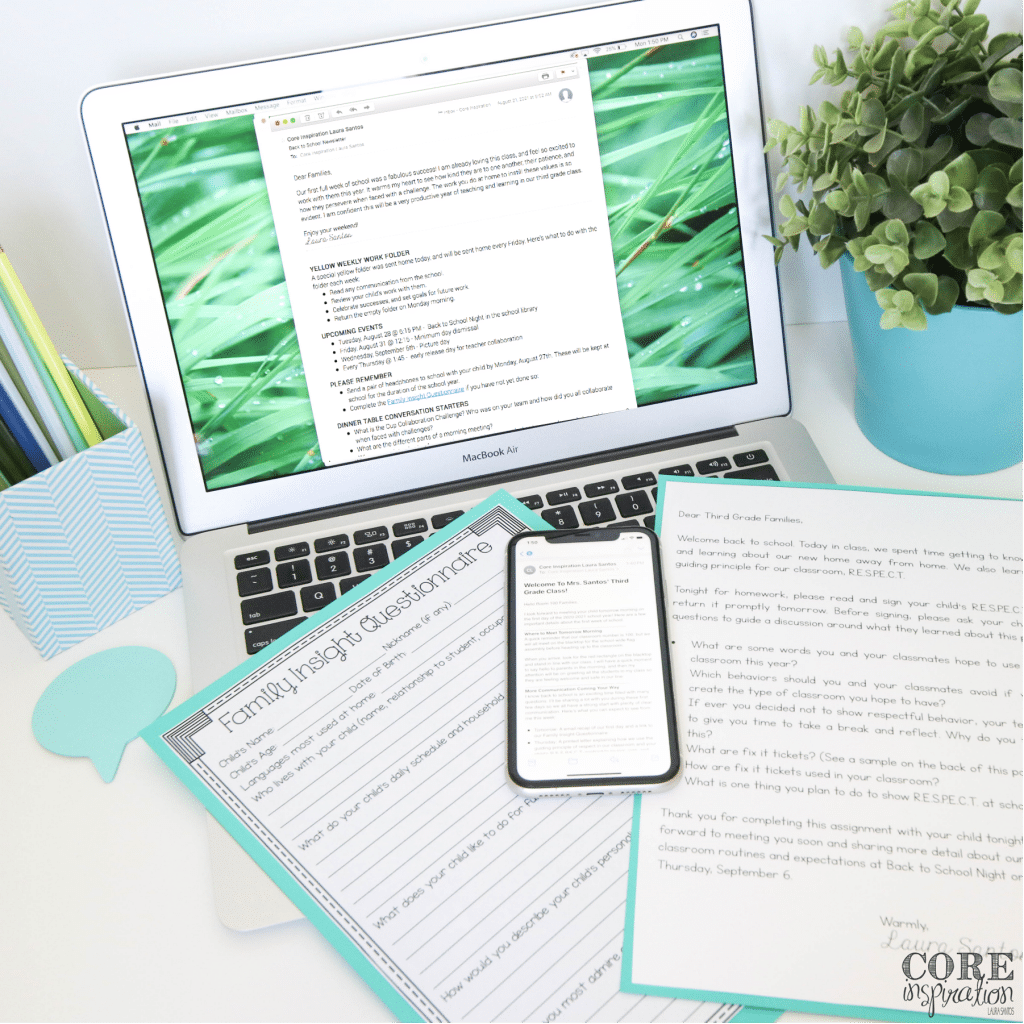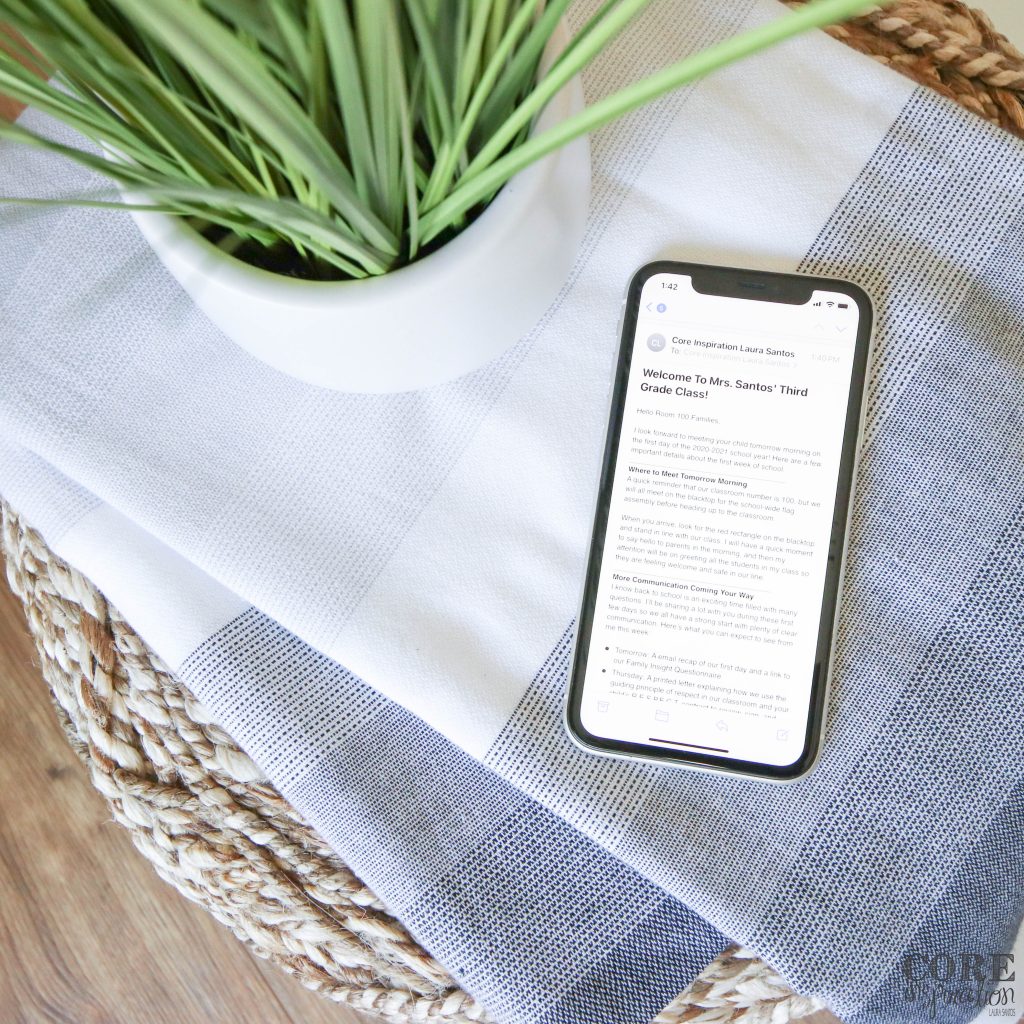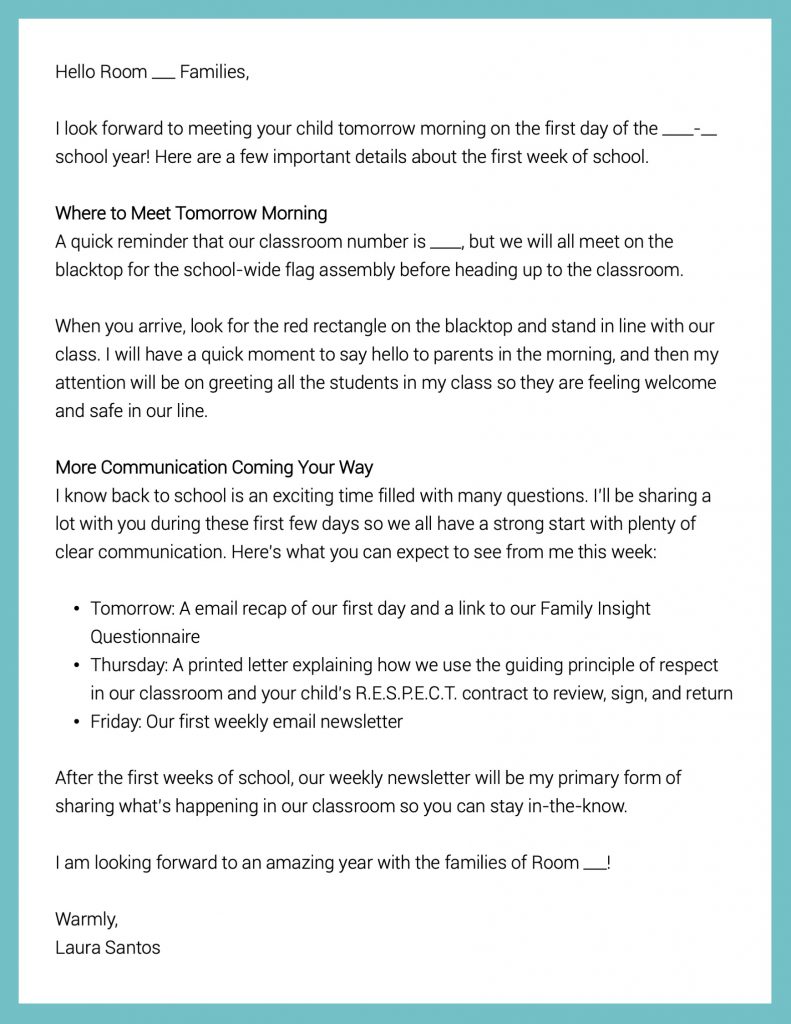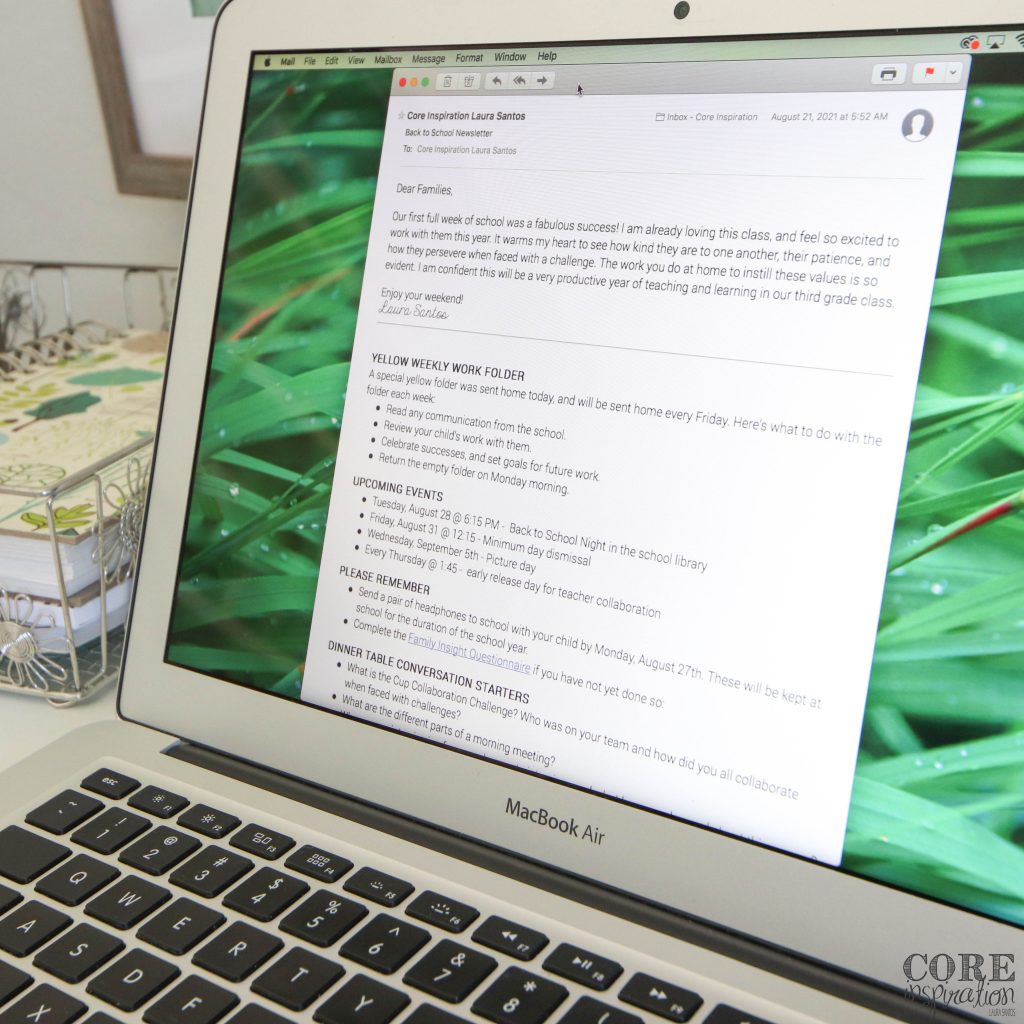
Focusing on parent communication during the first week of school can help you build trust in your classroom community. It can also make your entire school year immensely easier because parents will begin to see you as an organized, proactive expert. A strong start in the communication department really helps ease back to school nervousness parents experience as they get to know their child’s new teacher. You’ll spend less time fielding parent questions, sitting in parent meetings, and answering parent emails.
So how can you establish this strong start?
Communicate with families multiple times during those first few days of the school year. This helps you set the standard for open communication and lets the families in your class know routine updates are something they can expect from you. Here are four methods of communication I use during the first week of each school year to do just that.

On the eve of the first day of school, send a quick email to the families in your class with information about the first day. Use this email to let families know where to meet when they arrive at school and set parameters for drop off.


Some families will see your first email of the year that evening, while others will see it the morning of the first day. Either way, they are heading into the new year with acknowledgement from their new teacher who is looking forward to the year ahead!
Feel free to copy the text from the sample note above and tweak as needed when you draft your first email to families this year.
During those first days of school, send a questionnaire home so parents can share insight about life at home, their child’s strengths and needs as a learner, and their child’s interest. This communication touch point not only helps you gather important information about each student in your new class, it also communicates your trust in each student’s parent as an expert who you want to learn from and partner with.
Some topics to consider including in your questionnaire may be:
I have tried both a printed version of the Family Insight Questionnaire and the digital version, and find I always get quicker responses that are more detailed when I send the digital version. Typing is a lot faster than writing, which parents seem to prefer during an already busy time of year.
You can find an editable version of the exact questionnaire I use each year here. This resource includes both a printable version and Google Form digital version.
Getting everyone on the same page about classroom management routines and expectations is another way to create a strong start each year. After you introduce students to your classroom management system, send a letter home to families explaining the system and encouraging further discussion.
When parents understand the overarching classroom expectations their child has been introduced to, any need for behavior touch points throughout the year are met with less surprise. This is yet another way to show parents you see them as a valuable member of the team who will help their child grow this school year.
In my classroom, I use the overarching theme of R.E.S.P.E.C.T for classroom management. After learning about this theme, students complete a R.E.S.P.E.C.T. contract that they sign in class, then take home and have their parents sign after reading the accompanying cover letter with their child.
The cover letter gives parents context for the contract and explains our expectations for respect in the classroom. There are discussion questions that help parents learn more about our lesson from that day and an explanation of the contract so they know why they’re signing the contract.
Classroom newsletters are an essential for keeping parents in the know so they feel confident about their child’s learning in your classroom. When it comes to newsletters, keep in mind parents want to know what’s happening in the classroom, but their schedules are full and they need something that’s quick and easy to digest. Bullet points are your friend when it comes to your weekly classroom communication.

Here’s the format that seems to result in the happy, informed parents who are so confident in what’s happening in the classroom.
This format allows parents to scroll and scan the information you send out each week. The dinner table conversation starters are a game changer because they give parents the language to ask specific questions about school, rather than the more general default questions that often result in one-word answers from their child.
Once again, you are showing you care about including them as valuable members of their child’s learning team. This routine also changes the dynamic because parents no longer rely on you as the sole source of information about what’s happening in the classroom. Their child is an expert about what they’re learning and what they see each day at school, so why not provide parents with the tools to learn more from their child.
I’ve also tried monthly and bi-weekly. Weekly actually saves time because you don’t have to worry about the newsletter being too long or wonder if you’re leaving out important details parents may be curious about.
As you’re planning your communication for the first week of school, think of what you have planned that can be easily shared with parents. Maybe there’s a little communication piece you can add to an already-existing back to school routine so parents are hearing from you often in the first week of school and the excitement for the year is amplified.
Prioritizing parent communication during the first week of school will help you build trust with parents, position you as an organized, proactive expert, and ease back to school nervousness parents experience as they get to know their child’s new teacher. You’ll get to enjoy new partnerships with parents that make the school year enjoyable and productive for all students.

I’ve been an elementary teacher for ten years, and love sharing tips and resources that make differentiated learning more manageable for you. Thank you for visiting.
Learn More
Dropping by with weekly tips, classroom strategies, and free content created with you in mind.
Join me and other 2nd through 4th grade educators in the Teaching with Core Inspiration Facebook Group. This is a place to collaborate, ask questions, and learn how teachers like you are using Core Inspiration resources in their classrooms. Hope to see you there!
© 2024 Core Inspiration ∙ Website by KristenDoyle.co
3 Responses
I need you to send this to me every year. What a great reminder to start the year off right with our families.
So glad it was helpful Amber! 🙂
I am always so grateful for your content. It’s incredibly relevant and helpful! Thank you!